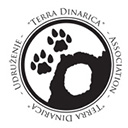HOW A STREAM BECAME A LAKE
You might have heard of “Nevesinje Sea” (Nevesinjsko more), but you probably didn’t know that it used to be just an ordinary stream. Nestled at the base of Velež, a mere four kilometers from Nevesinje, the construction of an earthen dam on Alagovac Stream resulted in a true little enchantment — Alagovac Lake. Or perhaps it’s better to say a grand enchantment as, precisely because of its size and beauty, locals refer to it as Nevesinje Sea.
These 40 hectares of water surface were not originally intended to be a tourist attraction or a picnic destination. The plan was to create a reservoir to supply the town with water, but its beauty lured tourists, visitors, swimmers, and, from March to October, fishermen.

Dado Ruvić
Today, Alagovac is a must-see destination for everyone who loves lakes and sandy beaches. One of the beaches features a car campsite with a volleyball court, benches, and barbecue spots, allowing you to stay here for days while respecting nature of course.
The lake is clean, stocked with fish, and free of pollutants, nestled in a dense forest with ample shade, at an elevation of 860 meters.
In the vicinity of Nevesinje lies the Morine Plateau. It is often referred to as European Tibet, so it’s worth visiting to see why. It used to be full of seasonal shepherds who led the livestock of locals to graze in the mountainous areas. Today, you’ll find only a few mountain huts with shepherds. They say that the Morine Plateau is a special story, exuding charm and soul, and that the entire region around it is picturesque and rich in natural treasures.

Enhad Goralija
In the village of Bratač, you’ll find another national monument of Bosnia and Herzegovina—Ovčiji brod. The bridge didn’t have a name, so it was named by the shepherds. “Brod” (boat) is an old term for a place to cross a river, and they named it “Ovčiji” (sheep’s) because in spring it’’s used to herd livestock to a pasture, from the so-called lowland Herzegovina to highland Herzegovina.
The Greek Cemetery on the UNESCO List
The most significant cultural and historical monuments in Nevesinje are the stećci tombstones. Approximately three thousand of them have been documented, which places Nevesinje, along with Konjic, among the municipalities with the highest number of stećci in the former Yugoslavia. The necropolis with the largest number of stećci is located in the village of Krekovi at the Kalufi site, beneath Mount Crvanj. It has 464 tombstones and is also known as the Grčko groblje (Greek cemetery). Since 2016, it has been included on the UNESCO list of protected world heritage sites, together with 27 other medieval stećci necropolises from Serbia, Montenegro, Croatia, and Bosnia and Herzegovina.
Find this QR code on the location:

































